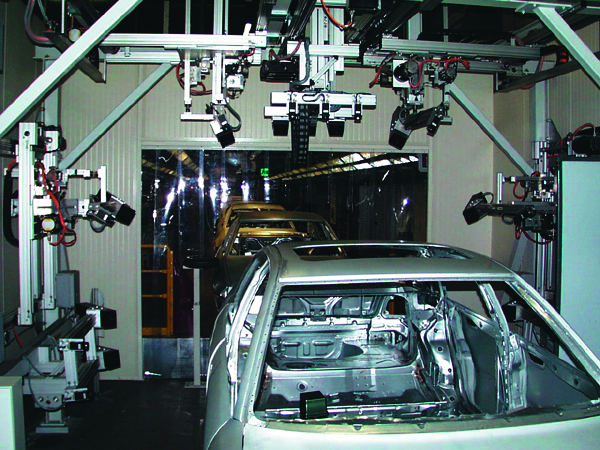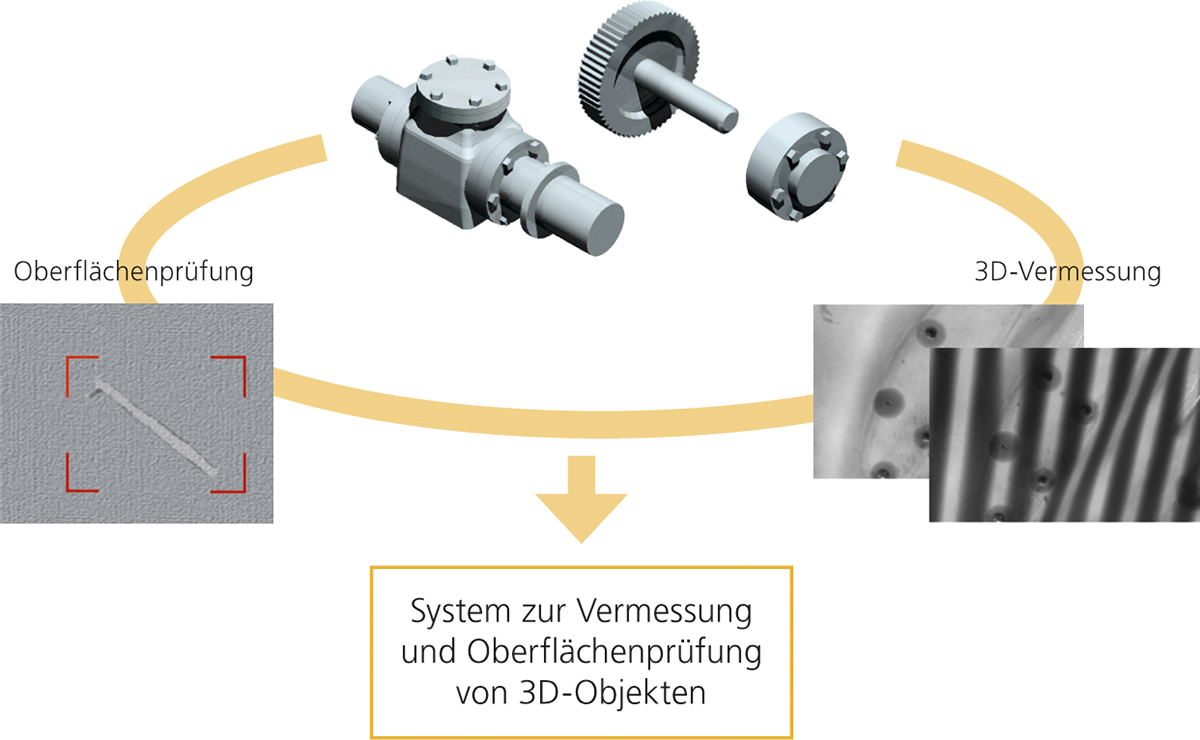To ensure a sound quality of the painted car body surface an optimal preparation of the raw car body is required. To reduce treatment of the car after painting it is necessary to recognize and treat the defects before finishing the fabrication of the raw car body.
In the project ABIS (Automatic Body Inspection System), which is promoted by the Bavarian Research Foundation, a system is being developed which is able to detect, classify, and mark the different types of defects on a raw car body. Propagation of these defects in the painting process can thereby be prevented.
For this purpose the system has been developed with these features:
- an optical measuring system to visualize the defects, e.g. dents,
- a software tool, using the most advanced software techniques, to recognize the surface defects is being developed,
- a corresponding system control for automation of the individual components (measurement, recognition, classification, marking, etc.). It is an adaptive system, i.e. it collects the knowledge of an experienced inspector and converts this knowledge into objective criteria to ensure a steady high quality level.


